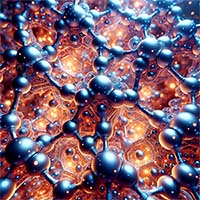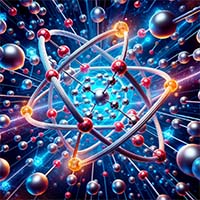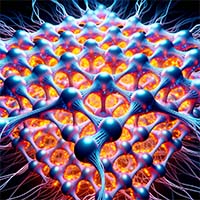Substrates Used to Research Quantum Materials
A Materials Science and Engineering (MSE) Ph.D. candidate requested a quote for the following:
I am currently pursuing my Ph.D. in Materials Science and Engineering (MSE). Our research is about probing elusive light-driven phenomena in quantum-engineered materials and unlocking the next-generation photonic, polaritonic, optoelectronic, and quantum devices.
I would like to request the following:
- We are interested in receiving a quotation for Single Crystal Quartz (ID: 2298) and Sapphire (ID: 2562). As our first engagement with your company, we plan to purchase only one unit of each for an initial assessment of their suitability for our experiments.
- Given our wide spectrum of light usage, ranging from UV to IR, we place significant importance on the transmittance properties of the aforementioned products (ID: 2298, 2562). Can you provide additional information on their UV to IR transmission characteristics?
- In addition, we have an interest in acquiring a SiO2/Si wafer. As with the previous items, we would like to purchase just one unit for a preliminary evaluation. Please include a quotation for this product alongside the quotes for items 1).
Reference #278231 for specs and pricing.
Get Your Quote FAST! Or, Buy Online and Start Researching Today!
What Equipment is Usually Used to Research Quantum Material?
Researching quantum materials involves a combination of synthesis, characterization, and theoretical modeling. A variety of advanced equipment and techniques are employed in this process. Here's an overview of some commonly used equipment and methods:
-
Synthesis Equipment:
- Furnaces: Used for high-temperature reactions to
 synthesize new quantum materials.
synthesize new quantum materials.
- Molecular Beam Epitaxy (MBE): Allows for the growth of thin films of materials layer by layer in a controlled manner.
- Pulsed Laser Deposition (PLD): Uses a laser to ablate a target material, depositing it onto a substrate to form thin films.
-
Characterization Techniques:
- X-ray Diffraction (XRD): Determines the crystal structure of materials by observing the diffraction pattern of X-rays passing through the material.
- Scanning Tunneling Microscopy (STM): Allows for atomic-scale imaging of surfaces and can be used to study electronic properties.
- Transmission Electron Microscopy (TEM): Provides detailed images of the atomic structure of materials.
- Scanning Electron Microscopy (SEM): Visualizes surface structures and compositions.
- Angle-Resolved Photoemission Spectroscopy (ARPES): Measures the energy and momentum of electrons in a material, providing insights into its electronic structure.
- Nuclear Magnetic Resonance (NMR): Probes the local electronic and magnetic environment in a material.
-
Magnetic and Electronic Measurements:
- SQUID Magnetometry: Measures the magnetic properties of materials using superconducting quantum interference devices (SQUIDs).
- Hall Effect Measurements: Provides information about charge carriers (electrons and holes) in materials.
- Resistivity Probes: Measures electrical resistance as a function of temperature, pressure, or magnetic field.
-
Spectroscopy Techniques:
- Raman Spectroscopy: Studies vibrational, rotational, and other low-frequency modes in a system.
- Fourier-Transform Infrared Spectroscopy (FTIR): Used to obtain an infrared spectrum of absorption or emission of a solid, liquid, or gas.
- Optical Spectroscopy: Analyzes how a material interacts with light across various wavelengths.
-
Low-Temperature and High-Pressure Equipment:
- Dilution Refrigerators: Achieves extremely low temperatures (close to absolute zero) to study quantum effects.
- Diamond Anvil Cells: Applies very high pressures to materials to study their properties under extreme conditions.
-
Computational Equipment:
- Supercomputers: Used for complex simulations and modeling of quantum materials, especially for understanding phenomena that are hard to study experimentally.
This list is by no means exhaustive, as the specific equipment used can vary based on the research focus and the type of quantum material being studied. However, these are some of the most common tools in the arsenal of researchers in the field of quantum materials.
What is Quantum Materials?
Quantum materials are a class of materials that have properties derived from the effects of quantum  mechanics, particularly at the atomic and subatomic scales. Here's a more detailed breakdown:
mechanics, particularly at the atomic and subatomic scales. Here's a more detailed breakdown:
-
Fundamental Quantum Mechanics: At the most basic level, quantum mechanics describes the behavior of particles on the atomic and subatomic scales. This can be quite different from classical mechanics, which describes the macroscopic world we see with our naked eyes.
-
Emergent Phenomena: Quantum materials often exhibit emergent phenomena, where the collective behavior of particles (like electrons) leads to new and unexpected properties. Superconductivity is one such example where certain materials can conduct electricity without resistance.
-
Topological Properties: Some quantum materials have unique topological properties.
-
Strongly Correlated Systems: In many quantum materials, the interactions between particles are so strong that traditional methods of studying materials fail.
-
Applications: Quantum computing, superconducting magnets, and advanced sensors.
-
Research Frontier: Condensed matter physics research.
Why Are Single Crystal Quartz Substrates Used in Quantum Material Research?
Single-crystal quartz substrates play a crucial role in quantum material research. Let's break down their use and significance in this field:
- High-Quality Material Growth: Single-crystal quartz substrates provides a clean, defect-free
 surface, ensuring the grown material maintains its inherent quantum properties without interference from substrate irregularities.
surface, ensuring the grown material maintains its inherent quantum properties without interference from substrate irregularities.
- Structural Compatibility: The crystalline structure of quartz can be compatible with many quantum materials, allowing for epitaxial growth, helping atoms of the grown material to align with the atoms of the quartz, leading to high-quality films with fewer defects.
- Transparency to Light: Quartz transparency over a wide range of wavelengths is beneficial when researching quantum materials, using spectroscopy, where light interacts with the material to reveal its properties.
- Thermal Stability: Single crystal quartz substrates can withstand high temperatures without degrading.
- Electrical Properties: Quartz is an insulator, which means it doesn't conduct electricity. When studying materials with interesting electrical or magnetic properties, an insulating substrate ensures that electrical currents from the substrate do not contaminate measurements.
- Mechanical Stability: Quartz substrates are robust and can withstand the mechanical stresses introduced during the material growth.
- Application in Devices: Once a quantum material is grown on a quartz substrate, it can be directly integrated into devices for testing and characterization, accelerating the research process.
- Reference Material: In some experimental setups, single-crystal quartz can also serve as a reference or a control sample, allowing researchers to differentiate between the intrinsic properties of the quantum material and any extraneous effects.
Why is The Lattice Structure Quantum Materials Important?
The lattice structure of quantum materials is crucial for several reasons:
- Fundamental Properties: The lattice structure determines the material's fundamental properties,
 including its electronic, optical, and magnetic behaviors. The arrangement of atoms and the distances between them can influence how electrons move through the material, leading to phenomena like superconductivity or magnetism.
including its electronic, optical, and magnetic behaviors. The arrangement of atoms and the distances between them can influence how electrons move through the material, leading to phenomena like superconductivity or magnetism.
- Emergent Phenomena: In quantum materials, the collective behavior of particles often results in emergent properties that are not present in individual particles. The lattice structure plays a crucial role in facilitating these emergent behaviors. For example, specific lattice structures can promote the formation of exotic states of matter, such as topological insulators or quantum spin liquids.
- Symmetry and Order: The symmetry of the lattice structure can lead to specific quantum effects. For instance, certain symmetries can give rise to protected electronic states resistant to disturbances, which can be helpful to in quantum computing applications.
- Interaction Strength: The lattice structure can determine how strongly particles, like electrons, interact with each other. In some quantum materials, these interactions are so strong that they lead to "strongly correlated" behaviors, where traditional theories of materials break down, resulting in novel and sometimes unexpected properties.
- Tunability: By manipulating the lattice structure (e.g., applying pressure, strain, or doping with other elements), researchers can "tune" the properties of quantum materials, enabling the exploration of new phases of matter or the enhancement of desired properties.
- Localization and Delocalization: The lattice can determine whether electrons in the material are localized (stuck in place) or delocalized (free to move). This distinction can lead to vastly different properties, from insulating behaviors in localized systems to metallic or superconducting behaviors in delocalized systems.
- Role in Experiments: The lattice structure is often the target in various experimental probes used to study quantum materials. Techniques like X-ray diffraction, neutron scattering, and scanning tunneling microscopy directly probe the lattice and its excitations.
In summary, the lattice structure of quantum materials is central to their behavior and properties. Understanding and manipulating this structure is critical to unlocking the vast potential of quantum materials in technology and furthering our comprehension of condensed matter physics.

 synthesize new quantum materials.
synthesize new quantum materials. mechanics, particularly at the atomic and subatomic scales. Here's a more detailed breakdown:
mechanics, particularly at the atomic and subatomic scales. Here's a more detailed breakdown: surface, ensuring the grown material maintains its inherent quantum properties without interference from substrate irregularities.
surface, ensuring the grown material maintains its inherent quantum properties without interference from substrate irregularities. including its electronic, optical, and magnetic behaviors. The arrangement of atoms and the distances between them can influence how electrons move through the material, leading to phenomena like superconductivity or magnetism.
including its electronic, optical, and magnetic behaviors. The arrangement of atoms and the distances between them can influence how electrons move through the material, leading to phenomena like superconductivity or magnetism.